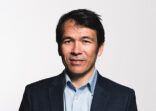
The current uncertainty over inflation, monetary policy, recession and the trajectory of China’s reopening has left investors “about in as uncertain environment as you can get”, according to Michael Dyer, investment director in the multi-asset team at M&G Investments.
“If you go back to the questions we had at the beginning of the year, which were inflation, which were central bank rates, which were potentially recession in Europe and China’s reopening, they’ve moved forward to a degree but none of them have really been answered by the market,” he said.
“And on top of that, you had a regional banking crisis in the US. Where we’re sat today from a macro point of view, we think we’re about in as uncertain an environment as you can get.”
Stock markets rallied in January on the belief that inflation would peak soon and central banks would pause interest rate hikes and eventually pivot to cutting them.
Since then, inflation data has been mixed and a number of central banks recently have surprised markets by raising rates unexpectedly such as the Reserve Bank of Australia and Bank of Canada.
The S&P has delivered a 15% return year to date, although this has largely been driven by the outperformance of a number of sectors, notably tech, with markets otherwise largely flat.
Dyer said that under the circumstances, this left M&G mostly under-invested with large cash positions and hedged exposures.
“We’re taking less market exposure with the explicit expectation I guess that if there is a period of volatility, we want to have dry powder ready to execute both in terms of having cash at hand and that also goes to our behavioural approach, not having the emotional baggage of being in a drawdown and having to rebalance,” he said.
Behavioural approach
Dyer is investment director across several strategies from Episode Macro, which is the most unconstrained and has the option to invest in cash and be long and short, through to Income Allocation, which is more conservative and invests primarily in bonds and equities.
At the heart of all these strategies is M&G’s behavioural approach in which the UK-headquartered investment manager eschews the forecast-based approach of a lot of funds and instead focuses on the behavioural element, in other words looking for instances where the market is either too fearful or too complacent when deciding when to buy or sell.
“We prefer to try and understand whether we think the market is getting irrational so whether there’s a behavioural element where things are either too fearful, in which case we want to be a buyer or too complacent in which case we probably want to be a seller, and try to pick off those more isolated opportunities rather than saying we believe that geopolitics is going to decline or we believe that China is going to reopen,” he said.

That behavioural approach has yielded fruit for Episode Macro in particular, which delivered an 18.93% return last year, comfortably ahead of its benchmark of SOFR plus 4%-8%. Episode Macro benefited from being short rates through to September last year before switching to long duration in late October.
Like a lot of macro funds though, which performed strongly last year mostly on the back of directional rates trades, there are questions whether this performance is repeatable. Here, Dyer urges patience.
“I think it’s a very valid question from investors to ask is that one and done? I think that’s valid. But I don’t think that considers what the future opportunity set is as we move from a beta to alpha investment, from a market investment to a skill-based investment,” he said.
“But you can’t force the next trade. You’ll always have to wait for the market to present you with the opportunity. So, there’s a patience game that investors need to understand.”
Asset allocation
Overall, given the fact that there is uncertainty over which direction the macro backdrop is heading in, Dyer says it is not an environment for taking a high conviction position on equities, while in fixed income, he favours duration.
“From a macro point of view, we feel like we’re in a disequilibrium right now, where things are settled but they could break either way. That from a multi-asset perspective isn’t really where we’d take a very high conviction position on equities. Fixed income is more interesting, particularly government fixed income in duration. We like modest equity exposure coupled with diversification from fixed income right now in terms of duration,” he said.
M&G’s preference for duration is at odds with many fixed-income investors, who see the inversion of the yield curve as providing an interesting opportunity for short-term carry trades. However, Dyer cautions that this approach comes with reinvestment risk.
“There’s a weakness in the yen, which is usually good for equities. But there’s also been a discipline in dividends and buybacks. There seems to be genuine change within boardrooms in Japan to be shareholder friendly.”
michael dyer, investment director, multi-assets, M&G Investments
Overall, given the fact that M&G is currently barbelled between government bonds and equities, Dyer does not have strong views on credit, although for the more constrained strategies, he said the preference is to play in the double-B space because of the default risk further down the curve.
On China equities, which was a popular trade earlier this year following the country’s reopening but has since tapered off, Dyer said that from a tactical point of view, there were trading opportunities as market sentiment was oscillating so wildly.
Regarding Japan, another popular market this year, he said that M&G had a long position for quite some time as Japan has been cheap.
“We’ve liked it from a valuation point of view. Again, speaking to our colleagues, we do find consensus that there is a structural story in Japan. I think this is what the market is latching onto. There’s a weakness in the yen, which is usually good for equities. But there’s also been a discipline in dividends and buybacks. There seems to be genuine change within boardrooms in Japan to be shareholder friendly,” he said.

















